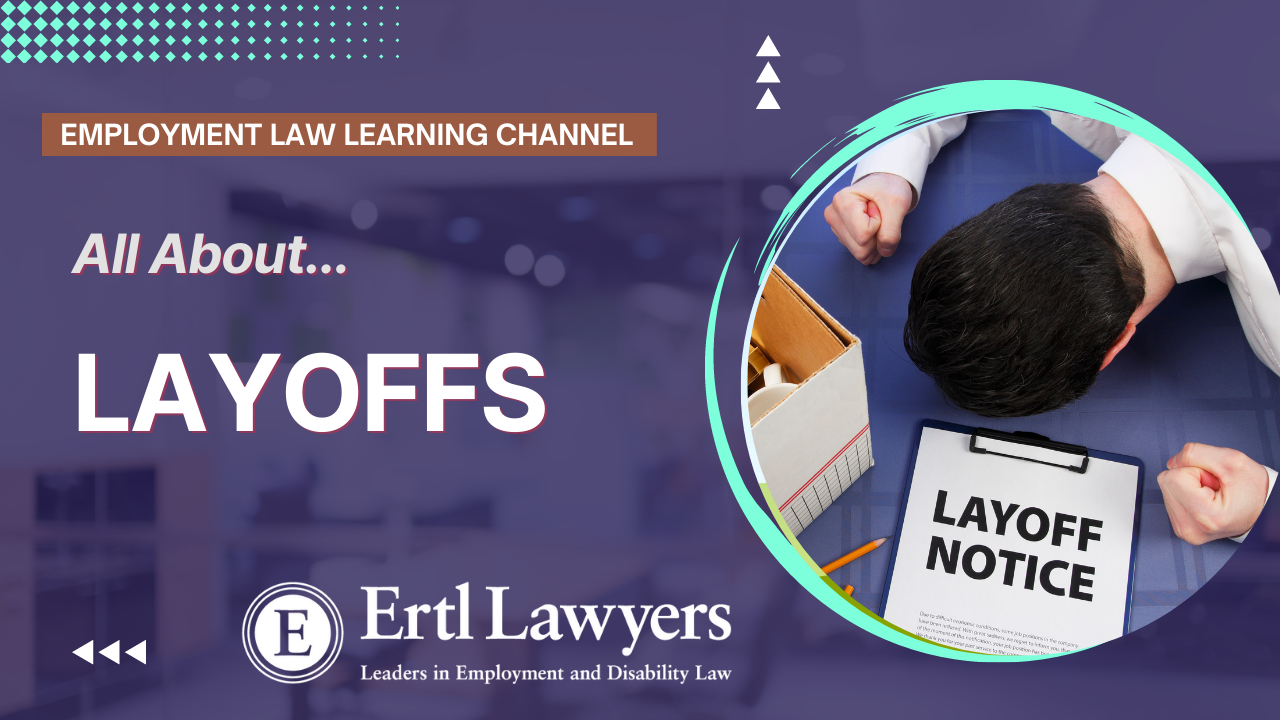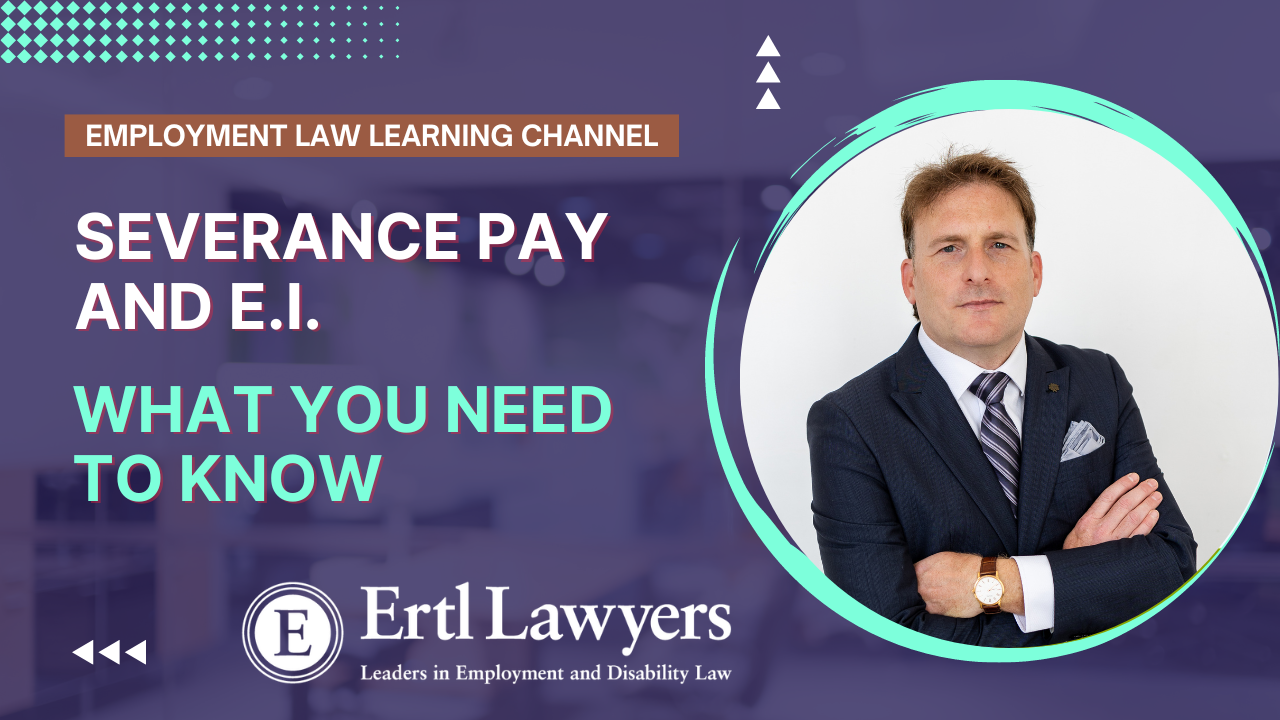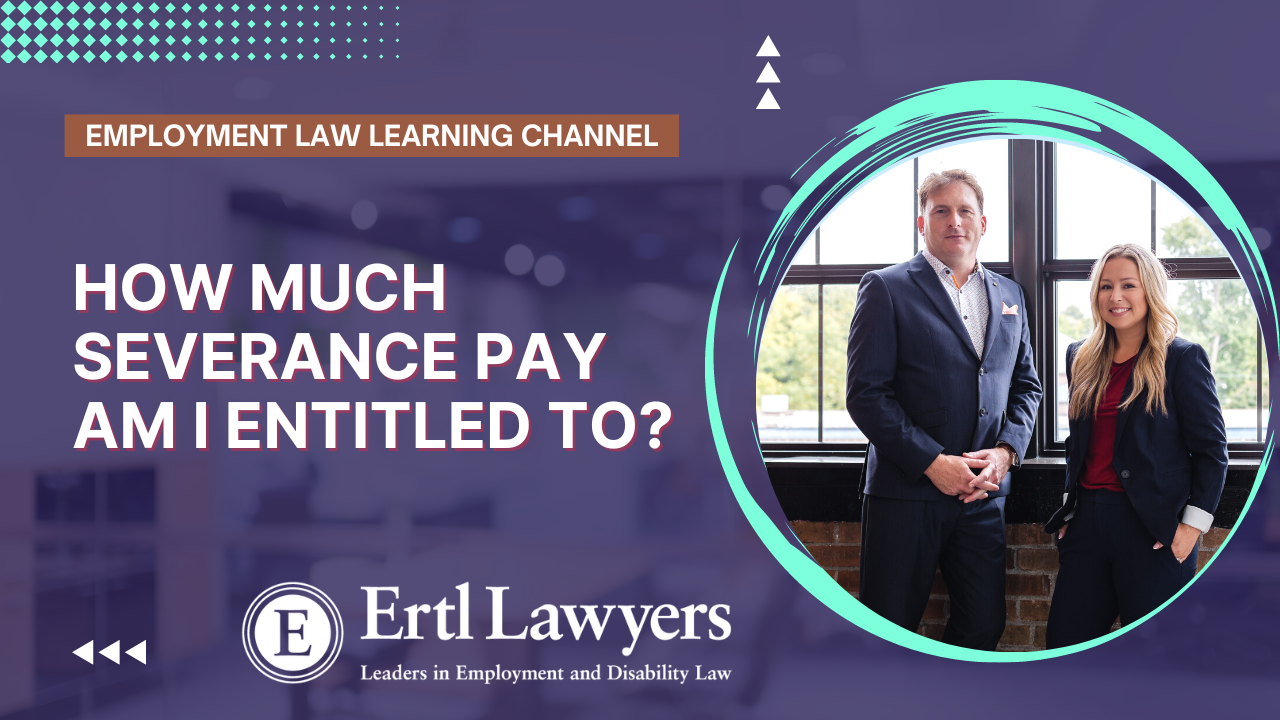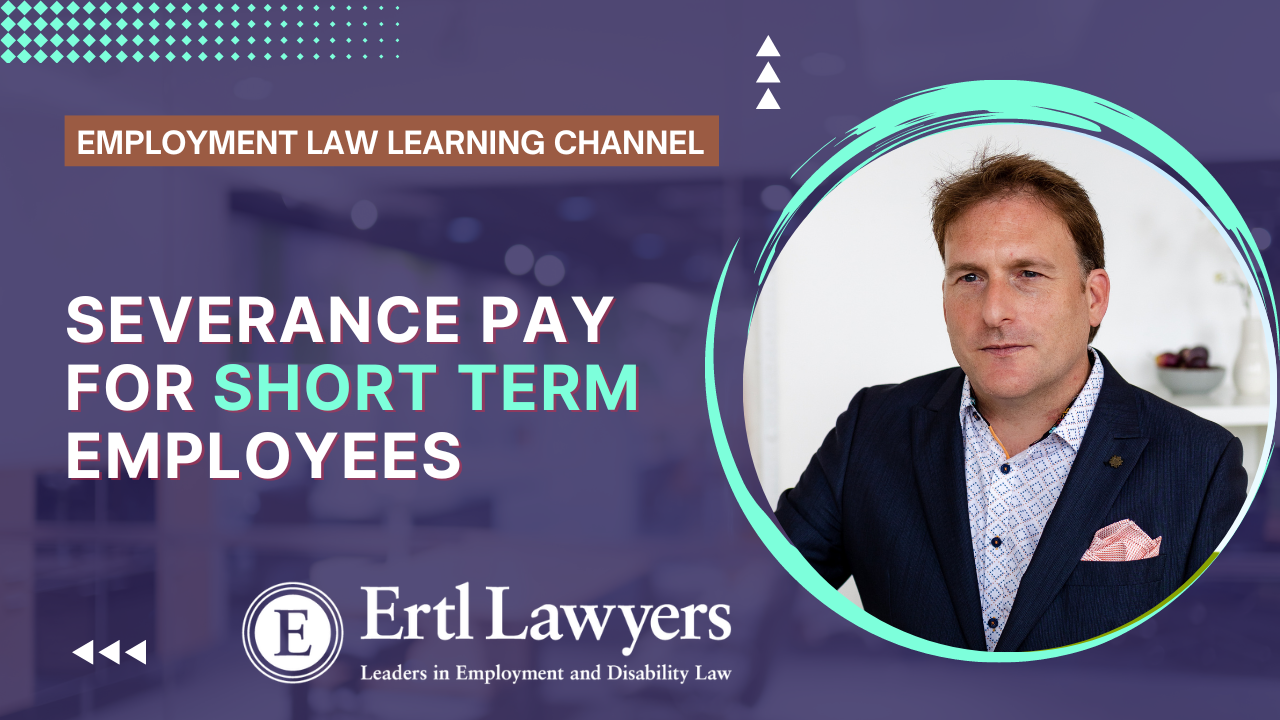Temporary Layoffs
Laid Off
What is the definition of temporary layoff?
Does an employer have the right put me on temporary layoff?
Is a temporary layoff a constructive dismissal?
How long can a temporary layoff last under the Employment Standards Act, 2000?
What happens if I am laid off for longer than what is allowed under the Employment Standards Act, 2000?
What is the minimum compensation under the Employment Standards Act, 2000?
How long can I wait before I claim constructive dismissal if I am laid off?
How can Ertl Lawyers Help?
What does a temporary layoff mean?
An employee is on temporary layoff when an employer cuts back or stops the employee’s work without ending their employment. This could be for a variety of reasons, including shortage of work.
Does an employer have the right put me on temporary layoff?
Yes and No.
Under the Employment Standards Act, 2000 (the ESA) an employer has the right to place you on a temporary layoff, but only for 13 weeks (or 35 weeks if they continue your benefits).
Anything longer, and the employer is considered to have automatically terminated your employment.
At that point, the employee would automatically get their ESA minimum termination entitlements (and possibly more under the common law)
However, under the common law, employers generally do not have the right to layoff employees. Meaning, a layoff is actually a “constructive dismissal” the very instant the employee is laid off.
For an estimate of your potential common law entitlements try our severance pay calculator.
When is a temporary layoff a constructive dismissal?
Again, although an employer has the right to lay you off under the ESA, under the common law, a temporary layoff is often considered a constructive dismissal at the very moment of layoff. In other words, the employee is taking position that he or she does not have to wait for the ESA “temporary layoff” to expire, because the very act of putting him or her on layoff is a dismissal / termination.
However, a layoff would not likely be considered a constructive dismissal where:
• The employment contract contained a term expressly allowing the employer to “temporarily” layoff the employee
• The employee has been laid off before (so it becomes an implied term of the contract)
• Layoffs are customary in that particular industry
• The employee agrees to the layoff (meaning the employer has laid you off, and you accept it)
Always speak with an employment lawyer about whether you have a case for constructive dismissal and whether such a strategy is likely to get you more compensation.
How long can a temporary layoff last under the Employment Standards Act, 2000?
Short Answer: A temporary layoff can last no more than 13 weeks in any consecutive 20-week period. However, it can last up to 35 weeks in any consecutive 52-week period in some exceptional cases, for example, where the employer has continued to pay the employees substantially and/or provides them with benefits during the layoff).
Here is the full section under the ESA:
Under the ESA, a “temporary layoff” can last:
• not more than 13 weeks of layoff in any period of 20 consecutive weeks;
or
• more than 13 weeks in any period of 20 consecutive weeks, but less than 35 weeks of layoff in any period of 52 consecutive weeks, where:
– the employee continues to receive substantial payments from the employer;
or
– the employer continues to make payments for the benefit of the employee under a legitimate group or employee insurance plan (such as a medical or drug insurance plan) or a legitimate retirement or pension plan;
or
– the employee receives supplementary unemployment benefits;
or
– the employee would be entitled to receive supplementary unemployment benefits but isn’t receiving them because he or she is employed elsewhere;
or
– the employer recalls the employee to work within the time frame approved by the Director of Employment Standards;
or
– the employer recalls the employee within the time frame set out in an agreement with an employee who is not represented by a trade union;
What happens if I am laid off for longer than what is allowed under the Employment Standards Act, 2000?
In a case where the employee decides to wait to be recalled, but is not recalled in either 13 weeks or 35 weeks (as discussed above), the employee is considered “terminated” for all purposes.
The employee is entitled to
• their minimum amounts of compensation under the ESA; and
• (maybe) more severance pay under the common law
What is the minimum compensation under the Employment Standards Act, 2000?
If the layoff turns into a termination, the employee’s minimum compensation under the ESA is:
Payment #1
With limited exceptions, most everybody is entitled to an ESA payment calculated in accordance with section 57 of the ESA. The formula is:
| LENGTH OF SERVICE | WEEKS OF PAY |
| Less than 1 | 1 week |
| 1 – 3 | 2 weeks |
| 3 – 4 | 3 weeks |
| 4 – 5 | 4 weeks |
| 5 – 6 | 5 weeks |
| 6 – 7 | 6 weeks |
| 7 – 8 | 7 weeks |
| 8 years or more | 8 weeks |
Payment #2
If you worked for an employer for 5 years or more, and the employer has a payroll in Ontario of at least 2.5 million per year, you are entitled to an additional payment calculated at the rate of 1 week for every year of service.
Am I entitled to more than the minimums under the Employment Standards Act, 2000 if I am laid off?
You might be. But, it depends on what your contract says (or doesn’t say). In the absence of contractual language to the contrary, the courts have said that an employee terminated without cause is entitled to “reasonable notice” of their dismissal (or severance pay in lieu).
To determine your potential entitlements, try our severance pay calculator.
How long can I wait before I claim constructive dismissal if I am laid off?
Not too long.
If you wait to treat the layoff as a constructive dismissal / termination, you will be unable to do so later. In other words, there comes a time when you are said to have “accepted” the layoff.
There could be a number of consequences to “accepting” a layoff, but for the purposes of this discussion, it means that your potential right to common law severance pay may not arise until after the 13 week or 35-week periods described above.
You should consult with an experienced employment lawyer before taking any steps.
Visit our videos page or download a free guide to learn more about termination and severance.
Have You Been Laid Off?
Knowing what to do when you’ve been laid off can be confusing. You need expert help. Call us today to book your free consultation.
Our Help can make all the difference.
Related Blogs
The Employment Standards Act
Ontario's Employment Standards Act (ESA) is one of the main sources of employment laws in Ontario. For almost every worker in Ontario, it outlines their minimum rights in the workplace and covers most aspects of the employer-employee relationship. Learn about your...
Your Guide to Stress Leave in Ontario
What is Stress Leave? Stress leave is a form of leave available to employees in Ontario who are experiencing excessive stress, anxiety, or other mental health issues that impede their ability to effectively fulfill their job responsibilities. "Stress leave" is...
Vacation Pay in Ontario: What You Need to Know
Vacation Pay in Ontario: Introduction With Thanksgiving weekend around the corner, the unofficial start of the holiday season begins. As we look ahead and start making plans, holiday shopping and sending out invitations, another important consideration is booking your...








